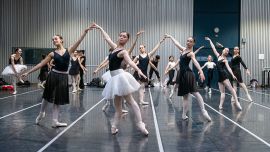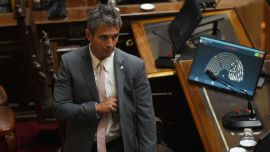The trend is impossible to overlook. A decade has now passed since the 2014 Transición, the last season of the Argentine top flight to feature 20 teams kicked off. That was also the last 'short' tournament, under the format of two league seasons a year, and Racing Club's win in December 2014 made them the 10th team to be crowned champion in 11 editions of the competition stretching back to Banfield's unforgettable Apertura win.
But since those heady, unpredictable days, the Primera División has become more bloated and much more repetitive.
Between them, Boca Juniors and River Plate have combined to lift seven of the nine titles that have been played since that infamous decision to expand the league to 30 teams and eradicate the short seasons. With Lanús' 2016 triumph coming in a truncated edition more akin to the current Copa de la Liga format, only Racing have managed to break the Superclásico monopoly over a campaign of all against all where the team with most points is crowned winner.
The reasons for this are obvious enough. Unlike the short sprint of the Apertura and Clausura sustaining a title challenge over a full season requires the kind of consistent form only attainable by sides who possess a stable playing staff. In a cash-starved league like Argentina's where player and coaching turnover is at astronomical levels this by definition gives the Buenos Aires heavyweights the advantage almost before a single ball is kicked.
Add in the additional strain on playing resources that a run in continental competition entails, and it is clear why depth has been crucial in deciding the fate of each championship. Boca in particular may have been far from spectacular most of this last decade, but their constant ability to field in effect two distinct, full starting XIs while their rivals run out of steam explains to a large extent why the Xeneize have added five new stars to their already crowded badge in that same period.
But with both Boca and River flagging so far in the Liga Profesional de Fútbol, could this be the year we finally see some new faces bathed in glory? There are certainly no shortage of candidates at this early stage of the campaign, both around Buenos Aires and beyond. Three points currently separate first-placed Huracán from Atlético Tucumán in sixth, with Unión, Racing, Vélez and Talleres in between and hungry for the title.
Two of those teams served up (admittedly this is faint praise) the most entertaining scoreless draw of a weekend that featured a mind-numbing four in a row. Both Huracán and Racing had plenty of chances to break the deadlock last Saturday but fell short in the final third, hindered by the woodwork and fine performances from veteran goalkeepers Hernán Galíndez and Gabriel Arias.
Each also showcased their title credentials and weaknesses: Huracán's typically no-nonsense, structured play masterminded by Frank Kudelka which has led them to go unbeaten since mid-March and concede just three goals so far in the Liga, albeit with a glaring lack of bite in front of the net; and another chaotic, on-the-limit Racing performance which hangs on talented individuals like Adrián Martínez and Agustín Almendra to catch fire.
Behind them Vélez look unstoppable at the moment, winning all five of their games in all competitions since the post-Copa América restart with 15 goals in favour and only one against, while Unión bounced back with a strong draw against River, Talleres remain one of Argentina's most talented sides – and Atlético, well, they have the power of the ageless Luis Miguel ‘Pulga’ Rodríguez back where it belongs in Tucumán.
It would be foolish to predict any champion at this point, especially since Marcelo Gallardo is back at the Monumental and ready to work miracles. But this is shaping up to be the most open league competition for a while, and if those underdogs at the top can keep up their momentum we may just have a shot of seeing a break in that Superclásico dominance come the end of the year.























Comments